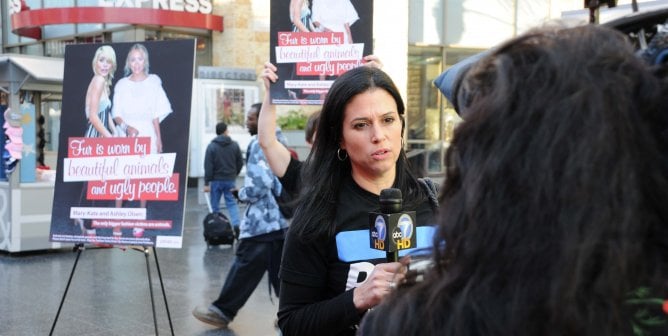Giant ‘Mouse’ to Ride the Metro to Protest Cruel Studies on Mice
PETA Will Demand an End to NIH-Funded Sepsis Experiments Shown Not to Help Humans
For Immediate Release:
May 14, 2018
Contact:
Tasgola Bruner 202-483-7382
What: On Tuesday, a giant “surgically mutilated mouse” will ride the metro from the National Institutes of Health (NIH) to the Department of Health and Human Services during morning and evening rush hours to call on NIH to stop funding cruel and futile sepsis experiments on mice. Sepsis, a life-threatening condition in which the body overreacts to infection, produces symptoms that include agonizing pain, difficulty breathing, fever, and chills and can cause multi-organ failure and, often, death. In one set of NIH-funded experiments at the University of Virginia, pairs of mice are surgically joined by being stitched together along the length of their bodies so that they share a bloodstream. In NIH-funded experiments at the University of Pittsburgh, mice’s intestines are punctured so that fecal material and accompanying bacteria will leak into their abdomens, producing sepsis.
When: Tuesday, May 15, 8–9 a.m. and 4–5 p.m.
Where: On the Metro Red Line, between the Medical Center and Judiciary Square stations, Washington, D.C.
“NIH is funneling taxpayers’ money into pointless experiments on mice while humans continue to die of sepsis,” says PETA Senior Vice President Kathy Guillermo. “Years of these painful experiments have resulted in tens of thousands of dead mice and a grand total of zero treatments for sepsis in humans. PETA is calling for all federal funding to be redirected into useful and humane research.”
PETA notes that a landmark 2013 study funded, in part, by NIH documented that the results of sepsis tests on mice are irrelevant to humans. NIH Director Dr. Francis Collins lamented the “loss of decades of research and billions of dollars” in the development of 150 drugs that successfully treated sepsis in mice but failed in humans—but inexplicably, NIH has since awarded more than $212 million in federal funding for similar experiments.


